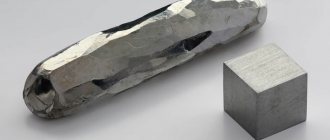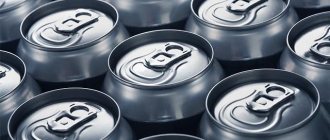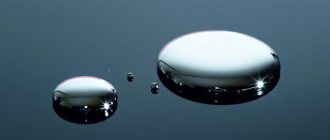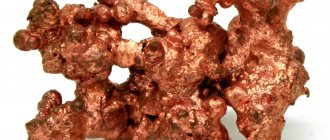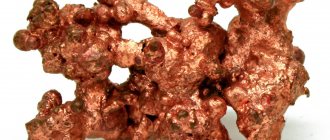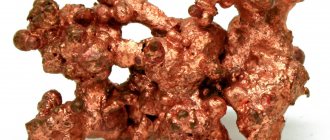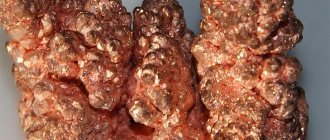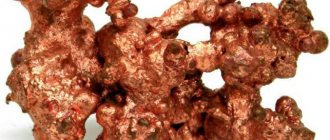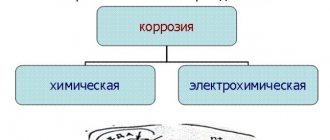Methods for obtaining copper
To extract copper from the minerals and ores in which it is found, three methods are currently used:
- hydrometallurgical
- pyrometallurgical
- electrolysis.
The production of copper by the pyrometallurgical method is the most common. The raw material for this process is chalcopyrite. To obtain pure copper from chalcopyrite, it is necessary to carry out a number of operations. The first of which is the enrichment of copper ore using the method of oxidative roasting or flotation. Flotation is based on the fact that gangue and its copper-containing parts are wetted differently. If you place the entire mass of rock in a container with a liquid composition that contains air bubbles, then the part with mineral elements moves to the surface with the help of these bubbles and sticks to them. As a result, the presence of concentrate or blister copper is observed on the surface of the bath. This composition contains from 10 to 35% pure copper. This powdered concentrate is the raw material for further production of pure copper. The reactions of producing copper by oxidative roasting proceed in a completely different way. This method is used to enrich copper ores, which contain a significant amount of sulfur. To implement this technology, it is necessary to heat the ore to a temperature of 700–8000 degrees. Under the influence of such high temperatures, sulfides are oxidized, and the volume of sulfur in copper ore is reduced by almost half. The next stage is the melting of enriched ore in reverberatory or shaft furnaces at a temperature of 14500. The result of this melt is the formation of matte - an alloy that consists of copper and iron sulfides.
To improve matte performance, it is subjected to blowing in horizontal converters without adding additional fuel. Thus, iron and sulfides are oxidized, iron oxide turns into slag, and sulfur becomes oxide - SO2. Blister copper obtained in this way contains about 91% copper. To further purify the metal, copper is refined, that is, foreign impurities are removed. This is carried out thanks to the technology of fire refining in the presence of an acidified solution of copper sulfate. This copper refining is electrolytic in nature, and makes it possible to obtain metal with a purity of 99.9%. The hydrometallurgical method of copper enrichment is based on the process of leaching the metal using sulfuric acid. The result of this process is the production of a solution, from which pure copper is subsequently isolated. This method is also suitable for isolating precious metals. This technology is used to enrich ores that contain extremely small amounts of copper.
Method for electrochemical extraction of copper from sulfuric acid aqueous solutions
Usage: electrochemical separation of copper from sulfuric acid aqueous solutions. The essence of the invention: the method includes cathodic deposition of copper from a solution containing copper with a concentration of no more than 40 g/l at a cathodic current density of 86-258 A/m2. The process is carried out at a concentration of sulfuric acid in the electrolyte of 160-200 g/l and a temperature of 50-65°C. This makes it possible to increase the degree of copper extraction and improve the quality of the cathode deposit.
The invention relates to non-ferrous metallurgy and can be used at non-ferrous metallurgy enterprises when processing copper-containing aqueous solutions for deep extraction of copper from them.
There is a known method for the electrochemical extraction of copper from a sulfuric acid solution containing, g/l: copper 70-75; sulfuric acid 20; total sulfate ion is 150-155, at a temperature of 50°C and a cathodic current density of 200 A/m2. In this case, metallic copper is deposited on the cathode with its content of 99.2-99.5 wt. and the concentration of copper in the electrolyte is reduced to 30 g/l, that is, the degree of extraction of copper into the solid product is 48-50%. The degree of extraction is the ratio of the difference between the initial and final concentrations of copper in the solution to its initial concentration. The disadvantage of this method is the low degree extraction of copper, contamination of the cathode deposit with impurities (0.5-0.8 wt.) and the need to dispose of sulfuric acid solutions containing up to 30 g/l of copper. The closest in technical essence and achieved effect to the invention is a method for the electrochemical extraction of copper from sulfuric acid water solutions, which consists in the electrochemical deposition of copper from a sulfuric acid solution containing, g/l: copper 25-30 and sulfuric acid 50-150, at a temperature of 25-45 ° C and a cathodic current density of 86-258 A/m2. In this case, copper is deposited on the cathode, and the concentration of copper in the electrolyte is reduced to 10-15 g/l, i.e. a copper extraction degree of 50-60% is achieved. The copper content in the cathode deposit is 99.3-99.6 wt. the rest is made up of impurity metals iron (0.1-0.05%), nickel (0.2-0.1%), lead (0.2-0.1%), antimony (0.2-0.1% ) etc., that is, it is not possible to obtain high-quality cathode copper. The disadvantage of this method is the low degree of copper extraction, the low quality of the cathode deposit, as well as the need to dispose of sulfuric acid solutions containing up to 10-15 g/l of copper. Utilization of copper from sulfuric acid solutions of this composition are produced either by neutralization of sulfuric acid and subsequent complete precipitation of copper hydroxycarbonates and impurity metals, or by neutralization of sulfuric acid to pH 1-2, followed by cementation of copper on iron or aluminum scrap with further precipitation of the metals remaining in the solution with limestone. Thus, the processes of recycling copper from waste electrolytes associated with the neutralization of free sulfuric acid leads to an increase in the consumption of reagents and contamination of the deposited copper with a precipitant and impurity metals (up to 10-15 wt.) or a cementator (up to 20 wt.). The purpose of the invention is increasing the degree of copper extraction from aqueous sulphate solutions and improving the quality of the cathode deposit. This goal is achieved by the fact that in the method of electrochemical extraction of copper from aqueous sulphate solutions, including cathodic deposition of copper from a solution containing copper with a concentration of no more than 40 g/l, at cathodic current density is 86-258 A/m2, the process is carried out at a concentration of sulfuric acid in the electrolyte of 160-200 g/l and a temperature of 50-65 ° C. This allows reducing the final concentration of copper to 1.8-3 g/l, increasing the degree of copper extraction to 90-95% and improve the quality of the cathode deposit. Reducing the concentration of sulfuric acid to less than 160 g/l leads to disruption of the process of cathodic deposition of copper at low concentrations in the electrolyte, which does not allow reducing its content to less than 5-7 g/l. This is due to the fact that at a low content of copper and sulfuric acid in the solution, significant polarization of the cathode occurs and the process of cathodic hydrogen evolution begins to prevail over the process of copper deposition. In addition, under these conditions, copper deposition occurs under conditions of maximum current density, which leads to deterioration in the quality of the cathode deposit due to cathodic coprecipitation of impurity metals contained in the electrolyte. An increase in the concentration of sulfuric acid to more than 200 g/l leads to the beginning of the process of reverse chemical dissolution of cathode copper, which reduces the cathode current efficiency and leads to additional energy costs for the process of cathodic deposition of copper. A decrease in the process temperature below 50 ° C leads to a decrease in the rate of diffusion of copper to cathode, reducing the rate of its deposition and, ultimately, reducing the degree of copper extraction at the cathode. In addition, at a process temperature of less than 50°C at low copper concentrations (5-7 g/l), due to cathodic deposition, the copper deposit becomes contaminated with metal impurities (iron, nickel, etc.), which causes a deterioration in the quality of cathode copper. Increase in temperature process above 65°C causes increased evaporation of water and sulfuric acid mist from the electrolyte surface (more than 4-5 kg/m2 h), which leads to the need for frequent adjustment of the electrolyte composition in order to avoid salting out of copper sulfate, the need to organize a complex gas collection system and a significant deterioration in working conditions. Thus, the determining factors that make it possible to increase the degree of copper extraction and improve the quality of the cathode deposit are the concentration of sulfuric acid of at least 160 g/l and the process temperature of at least 50°C. With the specified parameters, it is possible to reduce the concentration of copper in the solution to 1.8-3.0 g/l, which leads to an increase in the degree of copper extraction. Improving the quality of the cathode deposit is associated with a decrease in the content of impurity metals in it, which are coprecipitated on the cathode together with copper. Impurity metals iron, nickel, lead, antimony, etc. are more electronegative than copper, and the process of their coprecipitation depends on the value of the cathode potential ( polarization of the cathode), which changes during the process of electrochemical extraction of copper depending on the concentration of the latter in the solution. Therefore, a decrease in the degree of coprecipitation of impurities and, thus, a decrease in their concentration in the copper cathode deposit is achieved only through depolarization of the cathode. At a sulfuric acid concentration of at least 160 g/l and a solution temperature of at least 50°C, the value of the cathode potential at a copper concentration of 1.8-3.0 g/l does not reach the potential for coprecipitation of impurity metals together with copper and makes it possible to improve the quality of the cathode deposit. To the concept The quality of cathode copper also includes parameters that do not have a strict quantitative expression, such as dendrite formation, the size of copper crystals and the density of its placement on the cathode matrix. The high content of sulfuric acid in the electrolyte and elevated temperature lead to an increase in the dissipative ability of the electrolyte and an improvement in its leveling properties. This leads to a decrease in dendrite formation during cathodic copper deposition, which makes it possible to obtain thicker deposits of cathode copper and increase the time of copper growth on the cathode matrix. In addition, carrying out the process with the parameters specified in the proposed method leads to a decrease in the size of copper crystals, which increases the density of the deposit. This causes a decrease in the occlusion of the electrolyte and helmet particles into the volumes between the crystals of the cathode deposit, which accordingly reduces the contamination of cathode copper with impurity metals. In addition, with a low final copper content in the electrolyte, it is possible to purify concentrated sulfuric acid solutions from metals using known methods, for example, dialysis, thereby obtaining pure solutions of sulfuric acid with their subsequent use for the preparation of new copper-containing solutions sent for electrochemical extraction of copper, that is, complete regeneration of sulfuric acid is carried out. The solutions obtained after separation of sulfuric acid (by dialysis), containing a small amount of copper and impurity metals, have low acidity, which facilitates the extraction of copper from them by known methods. It should be noted that the proposed method, due to deep decontamination of the solution (up to 1.8-3. 0 g/l copper) makes it possible to increase the end-to-end extraction of copper into the final product cathode deposit. EXAMPLE 1. An electrolyzer made of vinyl plastic and equipped with titanium electrodes was filled with 1.3 l of a solution containing 31.2 g/l l copper and 160.7 g/l sulfuric acid. The process of electrochemical extraction of copper was carried out at a temperature of 52°C and a cathode current density of 168 A/m2 for 4.5 hours. In this case, 36.9 g of metallic copper was obtained at the cathode, and the copper concentration in the electrolyte was reduced to 2.8 g/l , that is, a copper extraction degree of 91% was achieved. The copper content in the cathode deposit was 99.91 wt. which is significantly higher compared to the prototype. EXAMPLE 2. 1.6 liters of solution containing 35.8 g/l copper and 198.9 g/l sulfuric acid were poured into the electrolyzer. The copper extraction process is carried out at a temperature of 59°C and a cathode current density of 195 A/m2 for 4.8 hours. In this case, 54.2 g of copper was obtained at the cathode, and the copper concentration in the solution was reduced to 1.9 g/l, then there is a copper extraction degree of 94.7% achieved. The copper content in the cathode deposit was 99.93 wt. EXAMPLE 3. 1.5 liters of a solution containing 34.3 g/l copper and 181.3 g/l sulfuric acid. The process of electrochemical extraction of copper was carried out at a temperature of 64°C and a cathode current density of 218 A/m2 for 4.2 hours. In this case, 47.8 g of metallic copper was obtained at the cathode, and the copper concentration in the electrolyte was reduced to 2.4 g/l, then - there is a degree of copper extraction of 93% achieved. The copper content in the cathode deposit was 99.92 wt. EXAMPLE 4 according to the prototype. The electrolyzer was filled with 1.8 liters of solution containing 31.6 g/l copper and 132.3 g/l sulfuric acid. The copper extraction process was carried out at a temperature of 41°C and a cathode current density of 140 A/m2 for 5.6 hours. In this case, 38.3 g of copper was obtained at the cathode, and the copper concentration in the electrolyte was reduced to 10.3 g/l, that is a degree of copper extraction of 67% was achieved. The copper content in the cathode deposit was 99.43 wt. From the given examples it is clear that carrying out the process at a concentration of sulfuric acid in a solution of 160-200 g/l and a temperature of 50-65 ° C allows significantly from 60-70 to 90 -95% increase the degree of copper extraction into the cathode deposit and significantly improve the quality of the cathode deposit compared to the prototype.
Claim of invention
: METHOD FOR ELECTROCHEMICAL EXTRACTION OF COPPER FROM AQUEOUS SULFULATE SOLUTIONS, including cathodic deposition of copper from a solution containing copper with a concentration of not more than 40 g/l, at a cathodic current density of 86,258 A/m2, characterized in that the process is carried out at a concentration of sulfuric acid in electrolyte 160-200 g/l and temperature 50-65oC.
Copper production by electrolysis
Electrolysis of copper is one of the stages of chemical-physical processes to which ore is subjected to obtain copper. It is noteworthy that to obtain 1 ton of pure copper, you will need to process at least 200 tons of copper ore. The copper ore processing procedure itself is a multi-stage and very complex process that consists of 7 stages. The latest is copper electrolysis. After mining, the ore must be crushed in special machines. Next, the flotation process occurs, as a result of which, as we know, a concentrate is formed while preserving copper minerals. After this, firing occurs at high temperatures in special furnaces. The charge obtained during the firing process is placed in a smelting furnace, where it becomes matte, which in turn is sent for conversion. The product obtained after these processes is called blister copper, where 2-3% of the volume is occupied by impurities. The impurities include zinc, iron, or sulfur. They are removed by an oxidation reaction. At this stage, “red” copper is formed, which contains 99.7-99.9% Cu. The last stage is the electrolysis of copper itself, which allows us to obtain the purest copper possible. To carry out the copper electrolysis process, you will need special equipment, namely containers that are filled with an aqueous solution of copper sulfate containing free sulfuric acid. As a result of electrolysis, we will obtain a deposit of pure copper on the cathodes. And everything that ends up at the bottom of the bath is usually called sludge. It is a raw material for the production of precious metals.
Special project “Copper” - how do they get the most needed metal in the Urals?
“Oh, pour it in, copper is the most needed metal! Why the best?!”, our corrosive reader corrected his monocle. And if all the copper within a radius of five meters from you suddenly turns into peanut butter, then: the smartphone screen will go out, the computer will turn off, the light in the ceiling will go out. And a typical refrigerator without copper pipes is also useless. A complete blackout, in short, and with melted ice cream. It's time to howl.
The process of smelting and purifying copper is very complex, multi-stage. But Good News will show you how it works. Yes, and we’ll tell you something interesting about ecology, because we saw everything with our own eyes and smelled it with our nostrils.
Copper Age of Humanity
The world needs the purest copper possible and in incredible quantities - copper is in every electrical and electronic device. Only metal with a purity of 99.99% (roughly speaking: one gram of impurities per hundred kilograms of copper) is suitable for the manufacture of electronic boards, components, Li-ion batteries, wires, cables and cables.
The Kyshtym copper-electrolyte plant was not always a copper-electrolyte plant. Moreover, when the plant was built by Nikita Demidov in 1757, it was planned to smelt not copper, but iron and cast iron in Kyshtym. Electrolytic refining of copper began here only in 1908.
The story is long, glorious, with interesting twists and turns. We once wrote that the American Herbert Hoover worked here at the beginning of the 20th century. The man was fearless, a warrior and an adventurer, and also brilliantly educated. We, however, know Mr. Hoover not as a brilliant mining engineer, but as the 31st President of the United States.
But let's return to today, to copper smelting. And to the electrolyte. Our excursion to the Kyshtym copper-electrolyte plant, part of the Russian Copper Company, begins from the stoves. The yellow buildings in the photo are the “historical part”. The workshops were erected in 1908, expanded in 1913, and a hundred years later they were thoroughly reconstructed.
The head of the copper smelting shop, Alexander Postnikov, is leading us.
As Alexander assures, these riveted trusses and masonry have stood for a hundred years and will stand for the same amount of time without repairs.
The furnace in the photo below produces copper powder. This is the raw material for producing vitriol, and the powder is also a necessary component in subsequent technological operations, in particular for purifying electrolysis shop solutions and as a catalyst in the production of precious metals.
The main part of the workshop is occupied by the anode furnace, in which copper is melted.
Let us explain what exactly is happening. The plant receives blister copper as a feedstock, which is obtained from copper concentrate in Karabash; Scrap metal and anode remnants, which accumulate at the plant upon completion of the entire chain (more on this later), are also melted down. The task of metallurgists is to obtain that “four nines”, that is, 99.99% pure, from blister copper with impurities. The first stage of copper purification is called “refining”.
First, copper anodes should be cast from scrap. These are slabs similar in shape to knight’s shields with “ears” on the edges. Let's make a reservation: anodes are not yet “four nines”!
Let's move from the “historical part” to the new workshop next door to take a closer look at the production of anodes. In the new foundry, everything is similar, only the equipment is larger... and more highly productive. Let's start again with the oven.
The anode furnace is fully automated, operates around the clock and is controlled by one operator.
The photo below shows refining slag, that is, metal oxides from which copper is purified during remelting. By the way, some copper remains in the slag, and it will be extracted in the future.
The molten metal is automatically dosed (poured) into molds with an accuracy of plus or minus one kilogram, the copper cools, and then the anodes are removed and moved further. Scroll through the gallery, the beauty is incredible!
Molten copper is poured into refractory “baths” - molds. After cooling, the anode is removed.
In the last century, bottling was controlled by a person, “by eye,” so the anodes were obtained with a fairly large spread in mass.
The finished anodes are transported on rails to the electrolysis department.
The anode turns... turns...
The next stop is a large electrolysis workshop. This is where the final refining of copper occurs. We are met by the chief technologist of the copper electrolysis workshop, Evgeny Samsonov.
To understand what is happening, you will have to remember the school physics course. Electrolysis is the process of separating the constituent parts of solutions of substances on electrodes. In our case, pure copper will be released, and the impurities still present (at the level of tenths of a percent) will go into sludge.
A copper anode and a stainless steel plate—the “matrix”—are lowered into a bath of electrolyte and current is applied. On the anode there is a “plus”, on the matrix there is a “minus”. Copper ions from the anode “escape” into the electrolyte and stick to the matrix - to the cathode. Impurities remain in the electrolyte. As a result, after 15 days the anode completely disappears, dissolves, and almost only the mounting ears remain (they will then be melted down again). During this time, cathodes with copper “four nines” will be removed from the bath three times.
Evgeny Samsonov lists: in one series there are two lines, in each line there are 20 reinforced concrete baths. The workshop has two departments of ten series each. And in each series there are 800 matrices. Total 16,000 matrices. And 400 baths.
The bathtubs are loaded with an automatic crane: powerful men, unbending crowbars and stunningly strong words are no longer required at this stage.
The photo below clearly shows alternating anodes and cathodes. The electrolyte is continuously mixed using pumps (the greenish liquid in the photo is the electrolyte).
By the way, trucks endlessly scurry around the territory of the plant; they bring new baths from Belgium for the technical re-equipment of the copper electrolysis workshop. The photo clearly shows the size of each bathtub compared to the truck.
To separate the cathode copper from the steel matrix, the cathode passes through a special line - a cathode stripping machine. There it is bent and “tapped” with chisels. About everything in about a minute.
The process usually does not require manual labor; the line operates on the principle of an automatic conveyor.
So, here it is, our desired copper “four nines”! The cathodes are loaded into trolleys and taken to the smelter. Oh yeah! There is a special conversation about trolleys.
There is a special conversation about trolleys
The factory narrow-gauge railway is an endangered species, a real artifact. In the near future, the trolleys will be replaced by trucks, and the rails will be dismantled. But while the “piece of hardware” is working, you can admire it.
The track width is 75 centimeters. It was built in the 50-60s, the road is completely electrified. The trolleys are pulled by mine electric locomotives of late Soviet production (with a high degree of probability we can say that these are not serial models).
Where did they roll the cathode?
Our purest cathode should be the final product. Right now the Kyshtym plant is making wire rod, it’s something like a rod 8 millimeters thick, cut three kilometers long and wound into coils. The most high-tech product - copper foil for electronic devices - will begin to be produced in the very near future. We'll talk about foil later, but for now let's take a ride with the rod.
Cables and wires are made from wire rod at relevant enterprises. The excursion is led further by the chief technologist of the copper wire rod production workshop, Vadim Gunkov.
The cathodes, packaged in packs, are placed into the melting furnace using a forklift.
The molten copper from the continuous casting machine is fed through the drawing mill. One operator monitors the process.
The somewhat hardened metal (temperature 850 degrees) passes through a series of rotating rollers of a rolling mill - rolls. The rolls are getting closer and closer to each other, the cross-section of the workpiece is getting smaller and smaller...
…. and the output is that same eight-millimeter rod. As it moves through the steel pipe, the wire rod is washed with alcohol, dried and coated with wax. For cleanliness and shine.
The finished coil is pulled together, and then the loader takes it to the side.
Let's summarize so that we can explain to the children in a minute how it works? Blister copper is brought to the plant. To clean it, copper anodes are first cast. In electrolysis baths, the anode dissolves, impurities remain in the electrolyte, and copper ions “escape” to the cathodes. By the way, precious metals are then extracted from the sludge at the enterprise! 99.99% copper cathode is stripped from stainless dies and then melted to produce wire rod. Wire rod is convenient to transport and make other copper products from it. The production waste is put back into use to extract all the copper without any residue. All!
Foil is a delicate matter
The new workshop is almost ready: the equipment is under covers, the installation of machines, water treatment and air treatment systems is in full swing. The latest equipment is demonstrated by the head of the copper foil electrolysis workshop under construction, Igor Tarakanov. He talks about his patrimony with inspiration and feeling!
We will not dwell in detail on the production of foil, let there be a basis for another excursion. We will show you some of the most interesting corners, almost completely equipped with equipment.
Right now the Czechs are installing a water purification system. They “scooped it up” from the pond, used it for production, cleaned it - and, well, drive it around in circles. The workshop requires 20 cubic meters of water per hour.
This is a clean room. It is here that the finished foil will be cut into sheets or strips of any size. Even the smallest specks of dust are not allowed to fall on the surface of the foil; the personnel in such rooms work in special “spacesuits”.
A separate system is needed to prepare and filter the air in a clean room.
Foil is an essential component of printed circuit boards and Li-ion batteries. You have at least one such battery in your pocket or on your desk, in your phone or laptop. The launch of the workshop is scheduled for mid-2021.
Factory for people and vice versa
The plant is almost three centuries old, but, most importantly, it survived the most difficult times - the notorious nineties.
Everyone who witnessed the red decline of the empire knows: plants and factories have always been more than just walls, pipes and a factory whistle. Let us note that the atmosphere here is very humane. The soda machines in the workshops alone are worth it!
Carbonated mineral water cleanses the throat well and restores salt balance. If the following question suddenly arises: of course, water is free.
A commission periodically meets in the factory canteen and decides which dishes will not become more expensive in the near future. A hard worker must know for sure: with his 80 rubles (the price of a set lunch) he will be able to eat borscht and pasta with liver in a year. And at the entrance there are posters and announcements: the ensemble “Guselki” is performing, workers are invited on trips to holy places, recruitment has been announced for the women’s volleyball team... In the best traditions of the workers’ state, in short.
Well, perhaps the most important thing that was made for people is a filter from the German company LÜHR FILTER on the main factory pipe. Our guides remark: “For the last year, people who are not familiar with the situation have been asking: is the plant even working? There’s no smoke.” Indeed, at the height of the working day, when copper is being smelted with all its might, there is not only no smoke above the chimney, not even a cloud! Only steam from boiler rooms and occasional traffic haze. We attach the photo. Pay attention to the tallest chimney in the picture. Better yet, come see with your own eyes.
Cleaning systems are installed everywhere, even on small laboratory furnaces. And the snow on the factory lawns... is white.
We sincerely thank the management and employees of the Kyshtym Copper Electrolyte Plant for the excursion. Special thanks to the press service of the Russian Copper Company.
Preparation of copper oxide
Copper (II) oxide CuO is a black crystal that undergoes crystallization in a monoclinic system. The density of the compound is 6.51 g/cm3, and it melts at a temperature of 1447 ° C under high pressure conditions. As a result of heating to 1100°C, copper (I) oxide is released:
- 4CuO = 2Cu2O + O2.
Copper oxide does not dissolve in water and does not react with it. It has weak amphoteric properties with a predominance of basic ones. Reacts with aqueous solutions of ammonia to form tetraammine copper (II) hydroxide:
- CuO + 4NH3 + H2O = [Cu(NH3)4](OH)2.
It also easily reacts with dilute acids, releasing salt and water:
- CuO + H2SO4 = CuSO4 + H2O.
The result of the fusion of copper oxide with alkalis is the formation of cuprates:
- CuO + 2KOH = K2CuO2 + H2O.
Pure copper oxide can be obtained by reduction with hydrogen, carbon monoxide and active metals:
- CuO + H2 = Cu + H2O
- CuO + CO = Cu + CO2
- CuO + Mg = Cu + MgO.
The reaction for producing copper oxide by calcination of copper (II) hydroxide at a temperature of 200°C:
- Cu(OH)2 = CuO + H2O
Copper oxide can also be obtained through the oxidation of copper metal in air at a temperature of 400–500°C:
- 2Cu + O2 = 2CuO.
Copper refining is a technology for its step-by-step purification from impurities of other metals and metalloids.
In nature, native elemental copper exists in the form of plates, tree-like intergrowths (dendrites) or blocks. However, such deposits of this metal are far from sufficient to cover the world's demand for it.
At the same time, in many materials copper is present in a chemically bound state. Copper ores, such as copper pyrite (chalcopyrite) or copper luster (chalcocite), are processed during the beneficiation process into blister copper with a purity of no more than 97%. However, this level is insufficient for many copper applications. In particular, the electronics industry requires high-purity copper.
Copper refining technology includes 2 methods and simultaneously purification stages.
1. Pyrometallurgical refining method
With the pyrometallurgical (fire) refining method, air is blown through the blister copper melt with the addition of slag-forming additives. In this case, oxidation of certain metal impurities contained in blister copper occurs. Oxides of zinc, lead, arsenic or antimony evaporate, and oxides of tin, iron, cobalt or nickel turn into slag. The result is fire-refined copper with a purity of 99%.
2. Electrolytic refining method
Electrolytic refining uses copper anode plates 3 cm thick, which are immersed in a solution of copper (II) sulfate acidified with dilute sulfuric acid. In this case, thin sheets of pure copper serve as the cathode. Electrolysis takes place in large baths with many anode plates connected in parallel.
When a voltage of 0.2 to 0.4 volts is applied, fire-refined copper and all more chemically active metals contained in the anode are oxidized to form cations (Cu2+, Zn2+), which go into solution.
At the same time, less active metals, such as silver, platinum or gold, which have a more positive normal potential compared to copper, do not oxidize or dissolve. They are deposited at the bottom of the electrolyzer in the form of anode sludge, which is a valuable raw material for the production of precious metals and metalloids such as selenium and tellurium. In this case, pure copper with a purity of about 99.95% is released at the cathode, while ions of more active metals remain in solution.
Chemical Reaction Equations
Oxidation at the anode: Cu (unrefined) → Cu2+ + 2 e–
Reduction at the cathode: Cu2+ + 2 e– → Cu (pure)
Overall reaction: Cu (crude) → Cu (pure)
At the same time, water decomposes at the anode (reaction a). The oxygen released in this case oxidizes copper already at the electrode to copper (II) oxide (reaction b):
a) 2 H2O → 4 H+ + O2 + 4 e–
b) 2 Cu + O2 → 2 CuO
The added sulfuric acid converts insoluble copper(II) oxide to soluble copper(II) sulfate. Only as a result of this do ions acquire the ability to pass into solution.
To obtain 1 ton of pure copper, 250 kWh of electricity is required. It may take several months for fire-refined copper plates to completely dissolve.
Copper is a valuable raw material that can be recovered through recycling. Thanks to this, 80 percent of the copper mined throughout the history of metallurgy is still in circulation.
Electrolytic refining is also suitable for refining other metals such as zinc, tin or chromium. For this purpose, the metals to be refined are suspended in a solution of the appropriate sulfate.
Other materials on plumbing
- Vacuum metal casting technology
- Ultrasonic Metal Forming
- Determination of steel grade by spark
- Cold forming of metals
- Manganin
| < Previous | Next > |
Preparation of copper chloride
In nature, copper chloride is found in the very rare mineral ernochalcite CuCl₂•2H₂O, which is blue crystals. Divalent copper chloride has important practical significance, and its extraction from natural minerals alone is very limited. Therefore, scientists have come up with several ways to artificially obtain this compound. The main reaction of the industrial synthesis of CuCl₂ can be called the chlorination reaction of copper sulfide under high temperature conditions from 300 to 400 degrees °C. The reaction looks like this
- CuS + Cl₂ ―› CuCl₂ + S
Another option for the synthesis of cuprous chloride is chlorinating roasting, which is carried out at temperatures above 500 C:
- CuS + 2NaCl + 2O₂ ―› CuCl₂ + Na₂SO₄
Both reactions require the use of specialized equipment and increased safety precautions; for this reason, these reactions can only be carried out under industrial production conditions. In laboratory conditions, you can also obtain copper chloride by the following reactions
- Cu + Cl₂ ―› CuCl₂
- CuO + 2HCl ―› CuCl₂ +H₂O
- Cu(OH)₂ + 2HCl ―› CuCl₂ + 2H₂O. Neutralization reaction
- CuCO₃ + 2HCL ―› CuCl₂ + H₂O + CO₂. As a result of this reaction, the stronger acid will displace the acid residue of the weaker acid. A substitution reaction occurs
- 3Сu + 2HNO₃ + 6HCl ―› 3CuCl₂ + 2NO +4H₂0. This reaction is the most original. It occurs only in the presence of a mixture of two strong acids.
Preparation of copper glycerate
A qualitative reaction to detect the presence of glycerol in solutions is carried out in the presence of copper (II) sulfate and sodium hydroxide solution. As a result of the reaction, copper glycerate is formed - a complex compound with a blue-cornflower blue hue. The chemical reaction is carried out as follows:
- a solution of sodium hydroxide is added to a solution of copper (II) sulfate, resulting in the solution turning blue. Thus, we observe the precipitation of copper (II) hydroxide
- after that, add a few ml of glycerin and mix the solution. The resulting precipitate dissolves to form an indigo-colored complex compound. This is copper glycerate.
The equation is as follows: CH2OH-CHOH-CH2OH + Cu(OH)2—> Cu(-O-CH2-CH-O-)-CH2OH
Preparation of copper sulfide
Copper(II) sulfide or copper monosulfide - CuS, is an inorganic binary compound of divalent copper with sulfur. It is of the correct color, does not dissolve in water, and is also acidic in dilute solutions. In nature, it can be found in the form of the rare mineral covellite. Copper sulfide is obtained through direct interaction of elements, as well as as a result of the exchange reaction of divalent copper salts with water-soluble sulfides.
- Na2S+CuSO4=CuS+Na2SO4
- CuCl2 + H2S —> CuS + 2HCl
- 2CuS + H2 —>Cu2S + H2S. This reaction occurs under high temperature conditions of 600 to 700 oC
Preparation by the dry method gives copper sulfide the ability to conduct electric current. When the thermometer reaches 400 °C, noticeable decomposition of sulfide is observed.
